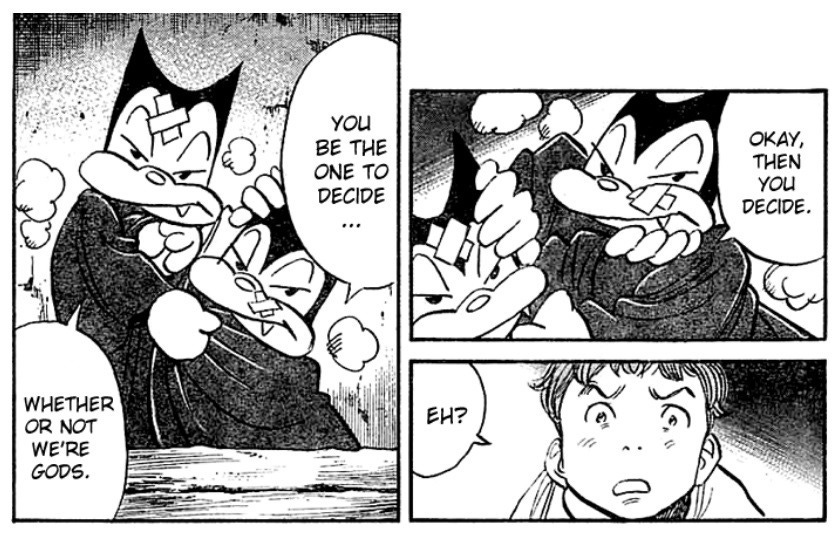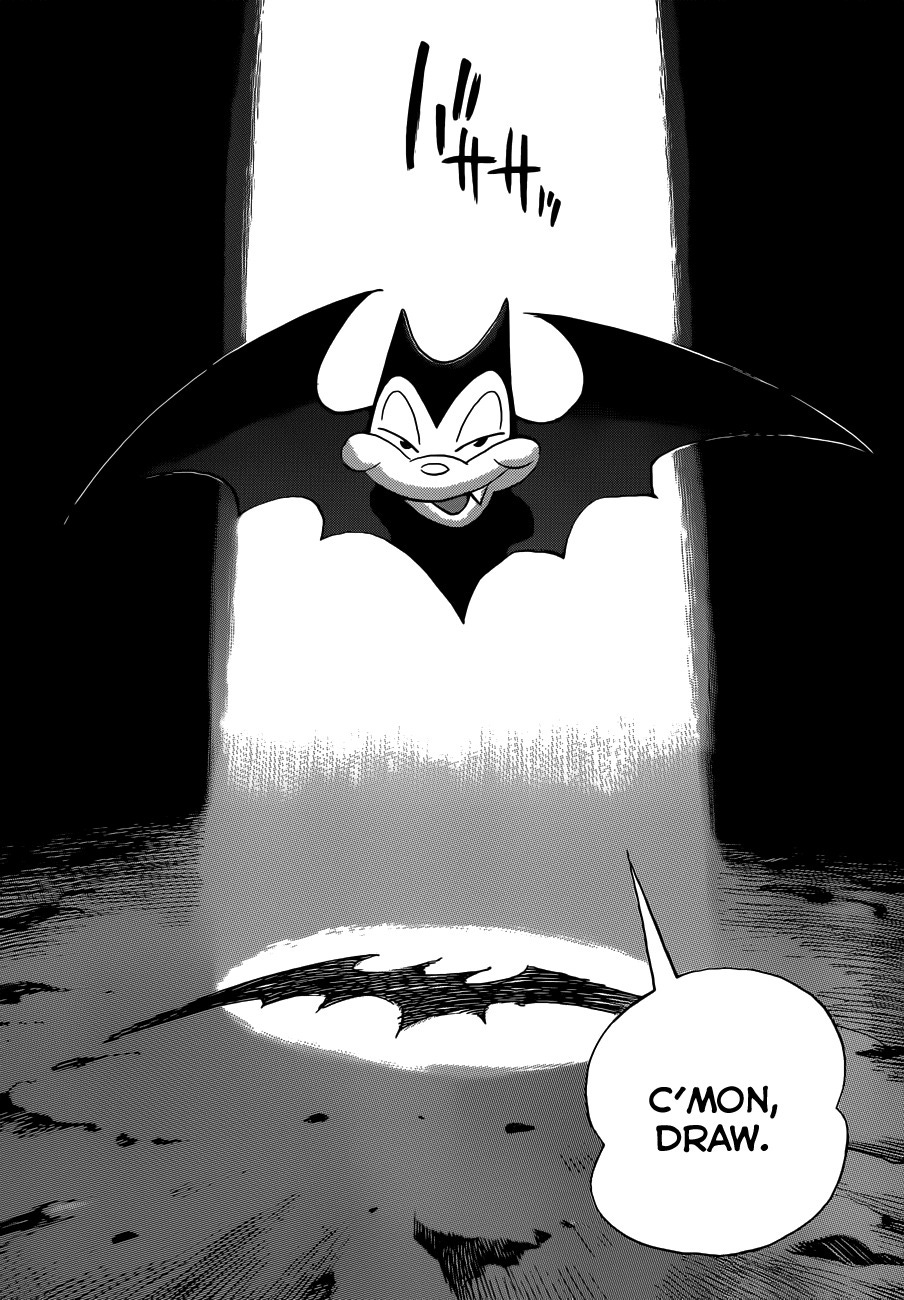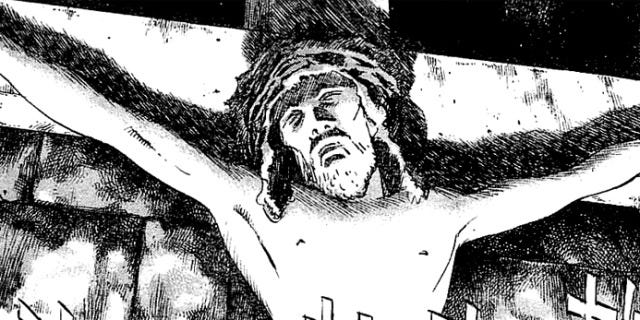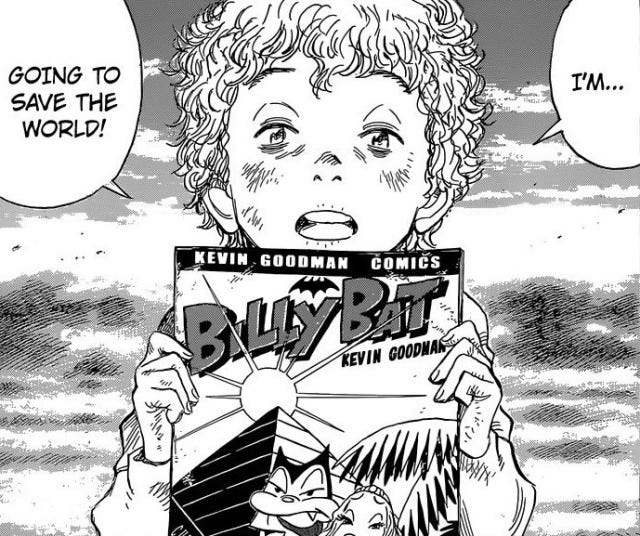This is an old essay of mine. I don’t cover the entire story but only one specific theme that I’ve never seen articulated elsewhere. Enjoy!
Billy Bat is the most ellusive manga by prolific author Naoki Urasawa. Its scope is vast, spanning all of history. As Billy is the thread holding the plot together, he is the key to unlocking the secrets of the narrative. Let’s take a look at the evidence to see what conclusions we can come to.
Billy often, but not always, appears to artists and historical figures. The way Billy looks to the readers is not necessarily the way he looks to the characters; he takes on the appearance most understandable to the person he is interacting with, as well as adusting his speech and behavior to their expectations.
Billy exists outside of time and space, being omnipresent in a way similar to the gods that humans have worshiped throughout history. Despite this, he doesn’t make a positive or negative claim regarding his possible divinity, putting that responsibility on humans.
Given that Billy is a creation of characters in the story, maybe he only exists in relation to human beings. When talking to Lee Harvey Oswald, he claims to be a guide for humanity, from beginning to end. But what exactly is that guide?
To explore this further, let’s examine the comic called “The First Man to Ever Draw,” created by Kevin Goodman as a child. We see a caveman reaching out to a beam of light, upon which Billy appears, saying:
The cornerstone of human intelligence is the ability to represent things in symbols. Not only is art symbolic, but language and math as well. In the archaeological record, the development of higher cognition is often dated by evidence of tools, astrological calculations, and artistic achievements.
So do we have our answer? Is Billy a representation of human creativity? Not exactly, but we’re on the right track. The main thing that makes Billy Bat difficult to parse is that it’s a meta work—Billy is a character used to create awareness in the reader that what they are seeing is fiction.
Billy Bat examines how humans are constrained by time. Multiple characters wish to rewrite the past, and the layering of different timelines emphasizes the inevitable march of history.
With the introduction of this theme, Billy’s purpose becomes more clear. Through the character, Urasawa suggests that the problem of time can be overcome through art. A two-dimensional creation might seem even more limited than the three-dimensional humans, but just one image can communicate ideas across millennia, influencing the course of events.
Billy appeared when humans first developed artistic ability, and artist after artist takes up the torch to draw him. He exists outside of time, unlike the humans that created him, showing how, through art, humans can transcend their limitations.
In the final arc, a prophecy of the “end of the world” is introduced. However, this prophecy actually predicts the end of the manga itself. As humans are restrained by time and history, the players in Billy Bat are ultimately characters whose fates are dictated by an author. The reach of the story is limited by Urasawa’s own knowledge; the reason his characters could predict the future is that, to Urasawa, events like the Kennedy assassination and 9/11 are history. At the end of the narrative, Billy can no longer give humans guidance, because he does not have an omniscient author behind him.
With the idea that Billy Bat is about the course of human history in mind, this line has a double meaning: the audience will have to create the story’s ending, and humanity will have to decide its own path. Urasawa doesn’t know if we will annihilate ourselves or not, so he can’t provide a conclusive ending. His point is, the future is the only thing we have influence over, so we have to take responsibilty for it.
The ending hinges on yet another example of characters finding common ground over art, as enemy soldiers bond when they realize they both love Billy Bat. They save a child together, who is then inspired by Kevin Goodman’s continuation of the famed Pharaoh’s Curse.
I view this as a call-to-arms. Urasawa hopes to achieve the same thing as Kevin Goodman, that his work will inspire others—but he’s also urging his readers to create themselves.
Regardless of time or place, art is a universal language with a tranformational power that is undeniable yet inexplicable. A manga may not be able to “save the world,” but Billy Bat makes an excellent case that one can try.














